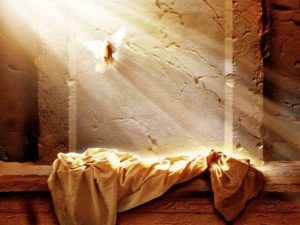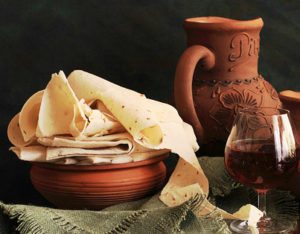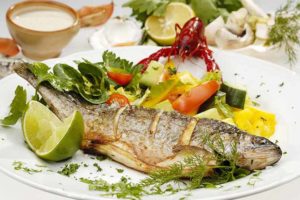In countries where Christianity is a state religion, Easter is often a public holiday. During Easter people celebrate Jesus Christ’s resurrection from the dead. Easter is a moveable feast as it doesn’t have a fixed date every year, as most holidays do. As a Christian country, Armenia also celebrates Easter. Armenian Easter or “Surb Zatik” is one of the Armenia’s joyful holidays of the year.
Story of Armenian Easter
Armenians have a strong connection with God. This nation was the first in the world to adopt Christianity and they still honor all the ancient Christian holidays, customs and traditions.
Armenian Easter is one of the five Cardinal Feasts of the Armenian Apostolic Church. Armenians celebrate Easter in the interval from 22 March to 26 April (35 days). This holiday helps people to get rid of sins and resumption towards God. Before Easter, all the believers observe a forty day fast to purify their body and spirit just like Christ. On Saturday evening, after the sacred liturgy, all the believers greet each other for Christ’s resurrection. On Sunday night people begin the true celebration of Easter.
Armenians prepare for this holiday long before the celebration day. For that day Armenian housewives plant wheat seeds in a beautiful plate, water it and place in a sunny place to make it grow faster. These seeds usually grow well and turn into a dense green carpet, which is soon decorated with colored eggs.
Easter Eggs
Generally, Armenians paint eggs in red, which symbolizes the blood of Christ. Unlike other countries where eggs are dyed with a variety of chemicals, Armenians dye eggs by using onion peels. Armenian housewives pour a little water in a pot and then add the onion peels and when the water becomes red they add eggs in water. Eggs colored with onion skins are useful and have a unique taste. The best combination for these eggs is Armenian lavash and tarragon. If you haven’t tried yet, do not waste your time to do so.
During Armenian Easter people greet each other by saying ”Քրիստոս հարյավ ի մեռելոց”/Christ is risen from the dead, to which you reply “Օրհնյալ է Հարությունը Քրիստոսի”/Blessed is the resurrection of Christ. Then people sit at the tables and play an interesting game. They choose hard boiled eggs and hit the other player’s egg with the intention to break it. People call it “egg tapping” or “egg fight”. The winner gets the eggs of the loser.
As a hospitable nation Armenians always lay a special table
where every dish has its own symbol and significance. Armenian housewives prepare rice with raisins where rice is the symbol of the humanity, and raisins refer all the Christians. But sometimes they put in it only 12 raisins to refer 12 apostles who had the hard life and were tortured for spreading Christianity in the world. Besides it Armenian housewives put on the holiday table Armenian fish called ”Ishkhan” and red wine, which symbolizes the flesh and blood of Christ.
Etymology
Throughout the history, people believe that the ladybug was a gift from God or Mary. This was the reason why almost every European country named that small insect with the name that linked back to God or Mary. Even in cases where the ladybug doesn’t link with God, Mary or any other meaning associated with that Christianity, it was historically considered by many people to be a good luck charm or good omen as people consider a ladybug a helpful insect.
Here is the comparison of the name of Zatik/ladybug in various languages:
Armenian – zatik – զատիկ/ladybug
Russian – божья коровка/ God’s cow
Lithuanian – dievo karvytė/ God’s cow
Slovenian – božja ovčica/God’s little sheep
Romanian – vaca domnului/God’s cow
Croatian – bubamara/the “Mara” (name) bug
German- marienkäfer/Mary’s beetle
Japanese – tentomushi/sky (where gods exist), path, bug
Spanish – mariquita/ little Mary/ lad’s bug
English – ladybug/Lady’s (Mary’s) bug
Netherlandish – lieveheersbeestje/dear lord’s bug
France – la bete a bon Dieu/God’s animal
The Five Cardinal Feasts of the Armenian Apostolic Church
- Christmas – Epiphany
- Armenian Easter
- Transfiguration/Vartavar
- Assumption of Saint Mary
- Exaltation of the Holy Cross/Khatchverats
5 Interesting Easter Traditions in the world
- Haux, France – Each year in Haux’s main square French serve a big omelet. For this omelet, more than 4,500 eggs are used. This tradition has an interesting story. Once when Napoleon and his army were traveling through the south of France they stopped in a small town and ate omelets and Napoleon liked it so much that he ordered people to gather their eggs and make a big omelet for his army the next day.
- Norway – In this holiday Norwegians read crime “Easter Thrillers” known as Paaskekrimmen.
- Rome, Italy – Pope commemorates the ‘’Way of the Cross’’ at the Colosseum which is a huge cross with burning torches that lights up the sky.
- Washington DC – Americans roll a colored hard-boiled eggs with a large serving spoon.
- Jerusalem/Israel – Israelis walk in the same path Jesus did on the day he was nailed to the cross. Some people carry a cross with them taking note his pain in that day.











Leave a Comment